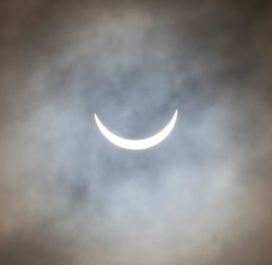New Scientist
Image: tj.blackwell
A solar eclipse can be alarming for animals and birds – and also for countries that rely on renewable energy, like Germany.
The country has invested heavily in solar power, with a million or so panelsgenerating nearly 40 gigawatts of installed capacity. On a normal day, the sun provides about 7 per cent of Germany’s electricity. The output from solar panels increases by about 5 GW per hour as the sun climbs higher in the sky.
But Friday 20 March is no normal day. Shortly before 10am local time, the moon will begin to pass in front of the sun, eventually blocking three-quarters of its light around 11 am. It will be noon before normal light levels return.
If it is a sunny morning, there could be a rapid 11 GW drop in solar output as the eclipse begins – and an 18 GW surge when it ends.
“We have calculated the maximum power drop and power increase assuming sunny weather,” says Volker Quaschning of the Berlin University of Applied Sciences. “It could be about three times higher than the maximum fluctuations we see in the morning on a normal sunny day.” Read more on newscientist.com…








